Written by: Ana Iffah Sabila (15119056) & Raden Almafayra Z. F. (15120051)
A 7.4 Mw earthquake occurred in The Flores Sea on 27 December 2021, followed by a 7 cm-high tsunami. According to BMKG, the earthquake happened in strike-slip mechanism. Meanwhile, from the existing fault maps in the Flores Sea, no strike-slip fault has been detected. Therefore, from 18 to 30 December 2022, an expedition to identify the fault in the Flores Sea was held. The expedition is called EWIN JAGAPATI or “Ekspedisi Widya Nusantara Jelajah Gabungan Perairan Timur.” The expedition was held in cooperation between BRIN (Badan Riset dan Inovasi Nasional), ITB (Institut Teknologi Bandung), and Unsoed (Universitas Jendral Soedirman) aboard the R/V Baruna Jaya III.
The EWIN JAGAPATI Expedition involved four undergraduate students and two senior lecturers. We were two of the lucky students who got the chance to take part in this expedition.

The ITB Team. From left to right: Dr. Astyka Pamumpuni/Mas Tyko (Geological Engineering lecturer), Alma, Ana (Geodesy and Geomatics Engineering students), and Dika (Geological Engineering student)
The expedition started from Ketapang Harbor, Banyuwangi and went through the Bali Sea, Flores Sea, Banda Sea, and ended in Ambon Port.
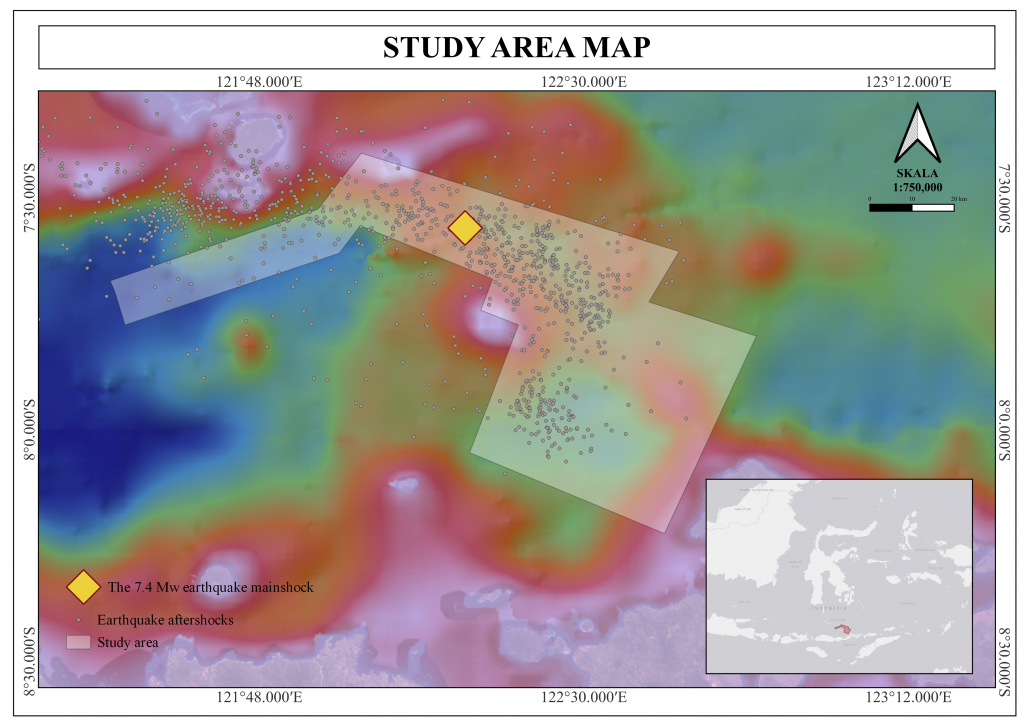
Map of survey area
On the second night aboard the ship, the research team and the ship crew held a meeting to confirm the survey lines to ensure that the dedicated survey time is efficient. We also set the jobs and shift distribution. There were three different shifts: 6 AM to 2 PM, 2 PM to 10 PM, and 10 PM to 6 AM. Ana took part in the 10 PM to 6 AM with 3 other people (Mas Harris from BRIN, Mas Filif from BRIN, and Mbak Ara from Unsoed) meanwhile Alma took the part in 2 PM to 10 PM shift with Mas Tyko and Pak Kuncoro from BRIN. During the work shift, we were responsible for the following things:
- To look after the MBES data acquisition and make sure that the data quality were acceptable;
- To keep an eye on the ship navigation and ensure that we were on the right survey line, and;
- To carry out the MBES data pre-processing.
Exclusively for the 10 PM to 6 AM shift, the pantry crew would always provide “Pop Mie: right before our shift starts. When we came to the bridge, the “dish” were already on the table! Thank you Pak Supriadi and Pak Adhy!
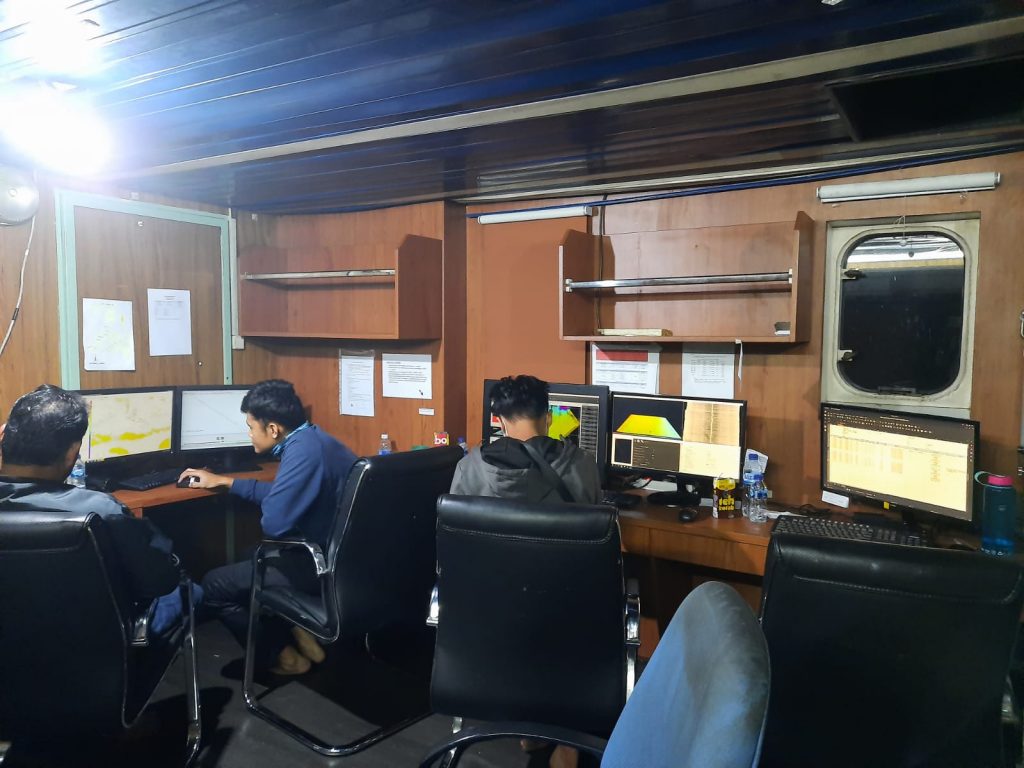
Our working space at the bridge
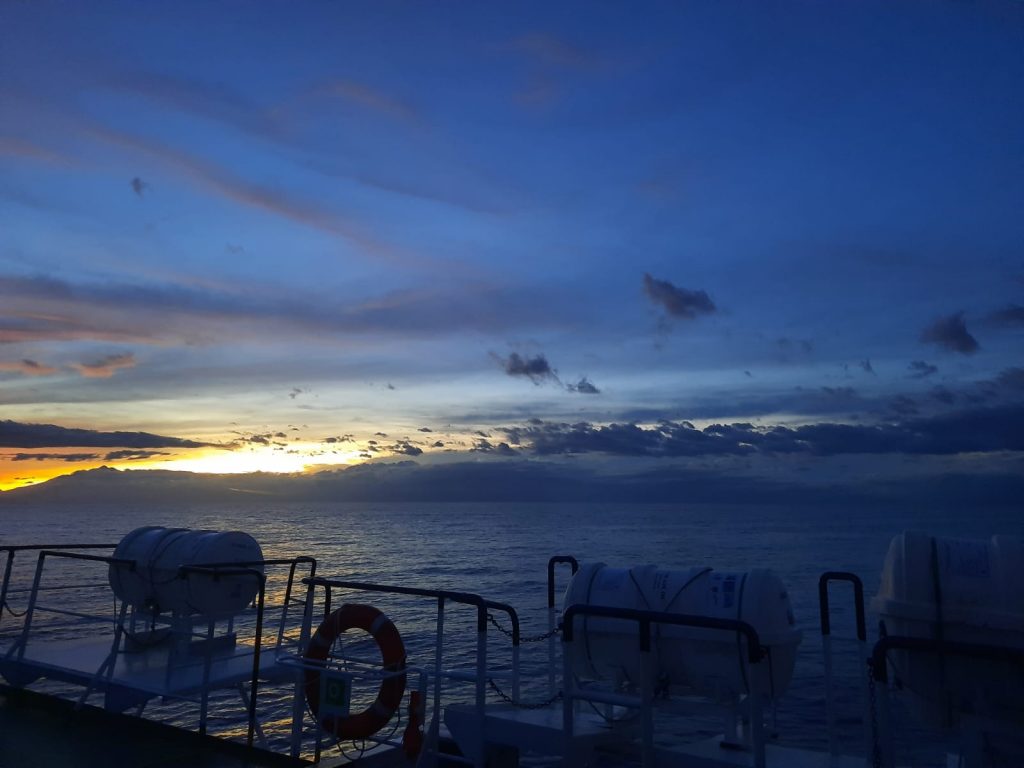
The first sunrise caught soon after the 10 PM to 6 AM shift!
We were lucky because we got the chance to see how to develop the SVS (sound velocity surface) using the SVP (sound velocity profiler) to calibrate the MBES data and had the opportunity to take a tour to the MBES transducer room with Mas Anan and Pak Hendra from BRIN. At the MBES room, we learned parts of Kongsberg EM304, the multibeam echosounder that installed on the R/V Baruna Jaya III.
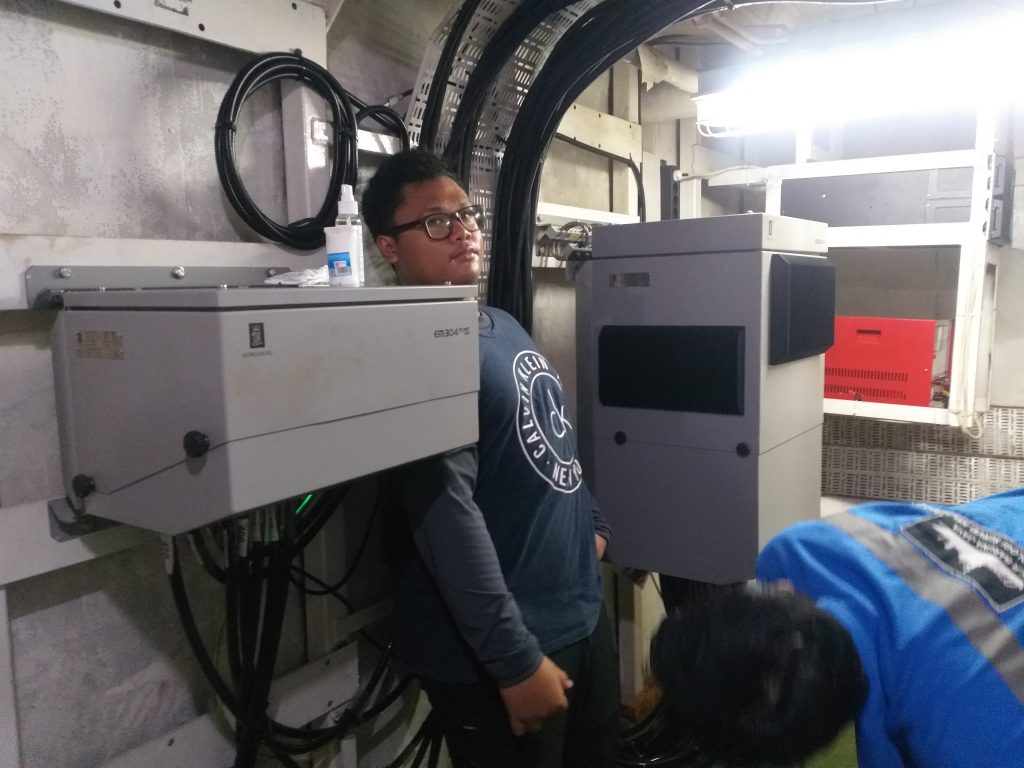
Dika in the transducer room 😀
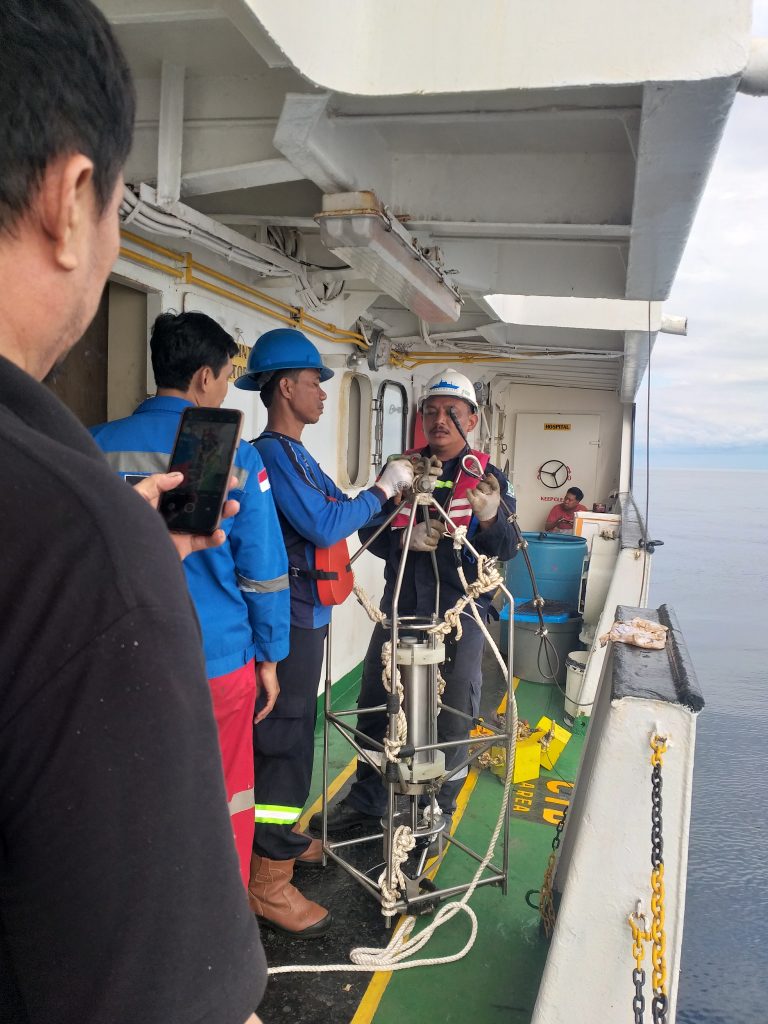
SVP deploying process
Besides bathymetric data, sediment samples from the seafloor in the study area were also obtained using a box corer, which available on board. The samples were taken from two different areas and classified based on the level of depth.
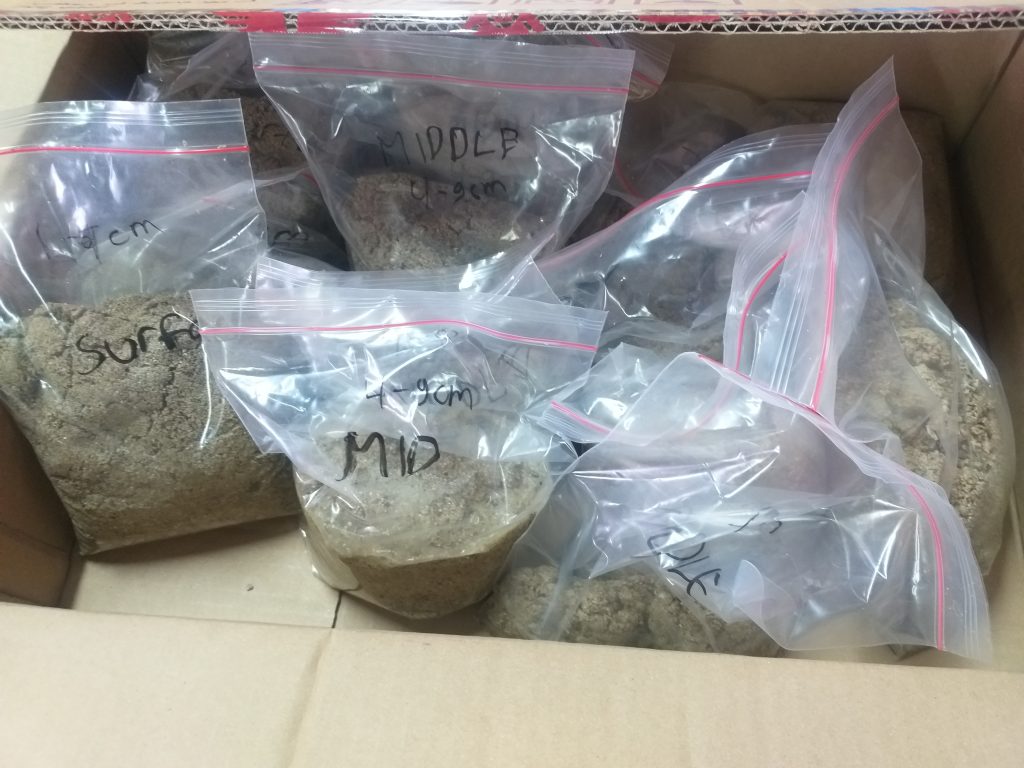
Obtained sediments
During our free time, we could go around the ship, talked to the vessel crews, watched movies or sang karaoke in the lounge, or just stared at the sea water. We could also ask the crew who were in charge in the bridge to teach us how to navigate and “drive” the ship!
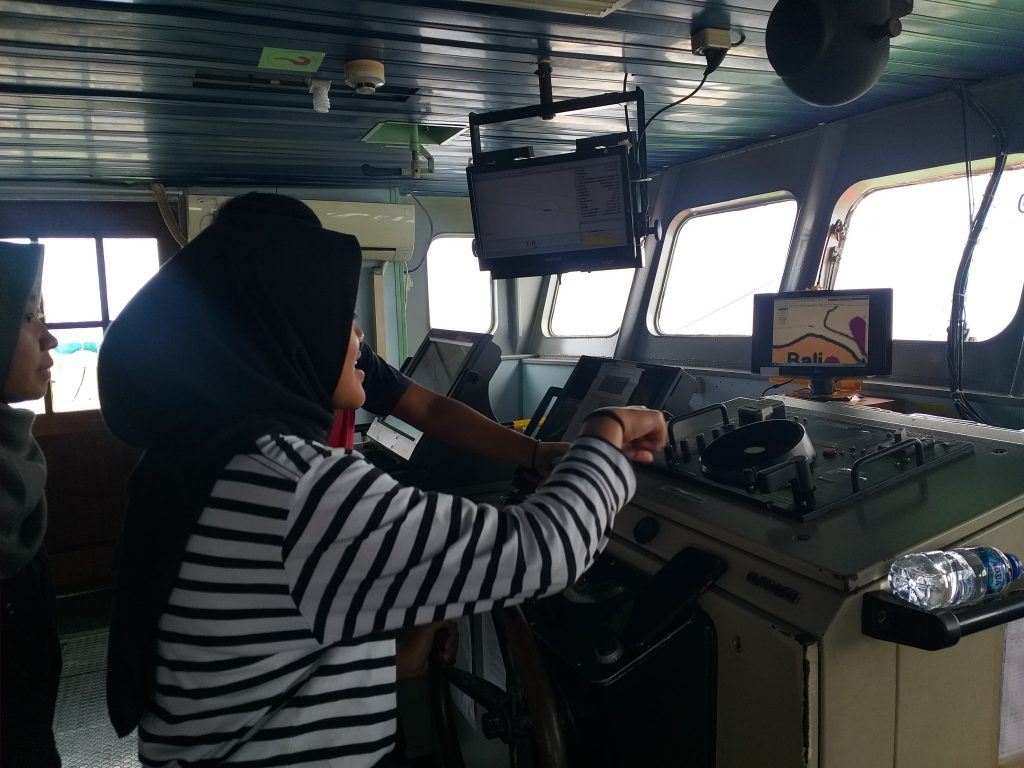
Alma tried to drive the ship! She was being watched by the crew, so no worries!
Things were getting more exciting when we found the trace of the fault we were looking for! Mas Tyko suggested to change the survey line instinctively while the data acquisition was still in progress, so the ship went through Mas Tyko’s directions based on the fault path prediction.
After ten days aboard the ship, we had to end the expedition due to the end of the year (new year’s national holiday). The expedition ended as the ship docked at the port of Ambon. Since it was our first expedition in a big research vessel, there were so many lessons that we learned during the expedition and so many unforgettable moments. The discussions, the food, the people, the sea-sickness, the conversations, and any other moments that I will cherish! Special thanks to all of the crew for making my first research expedition really beautiful and full of happiness!
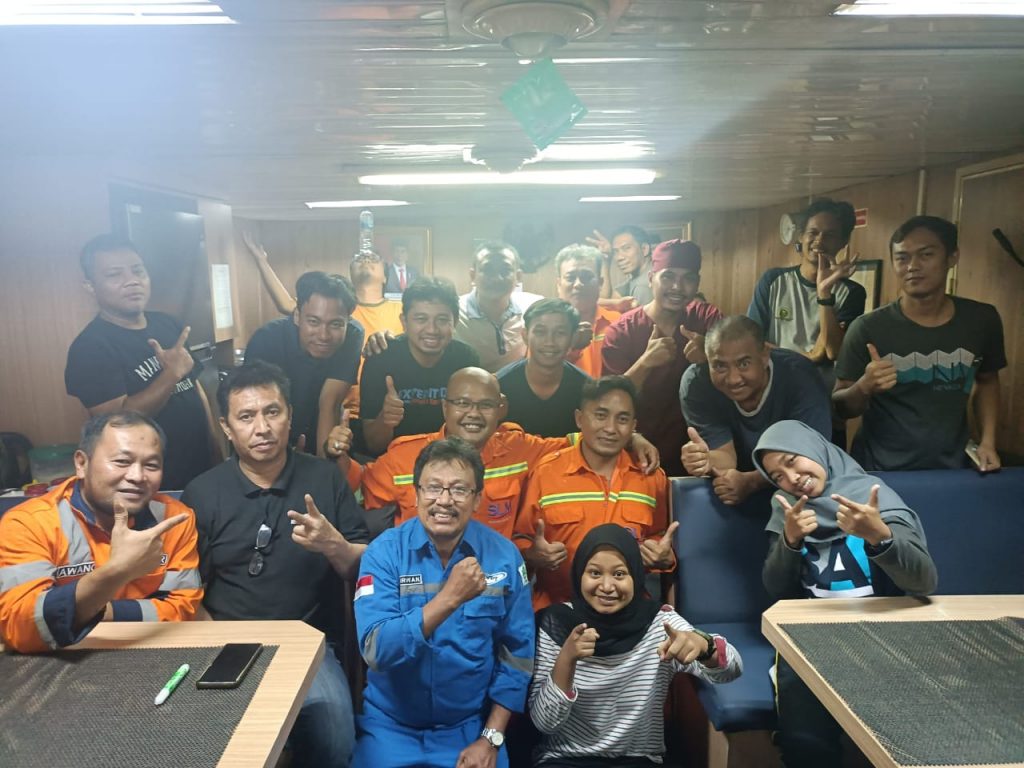
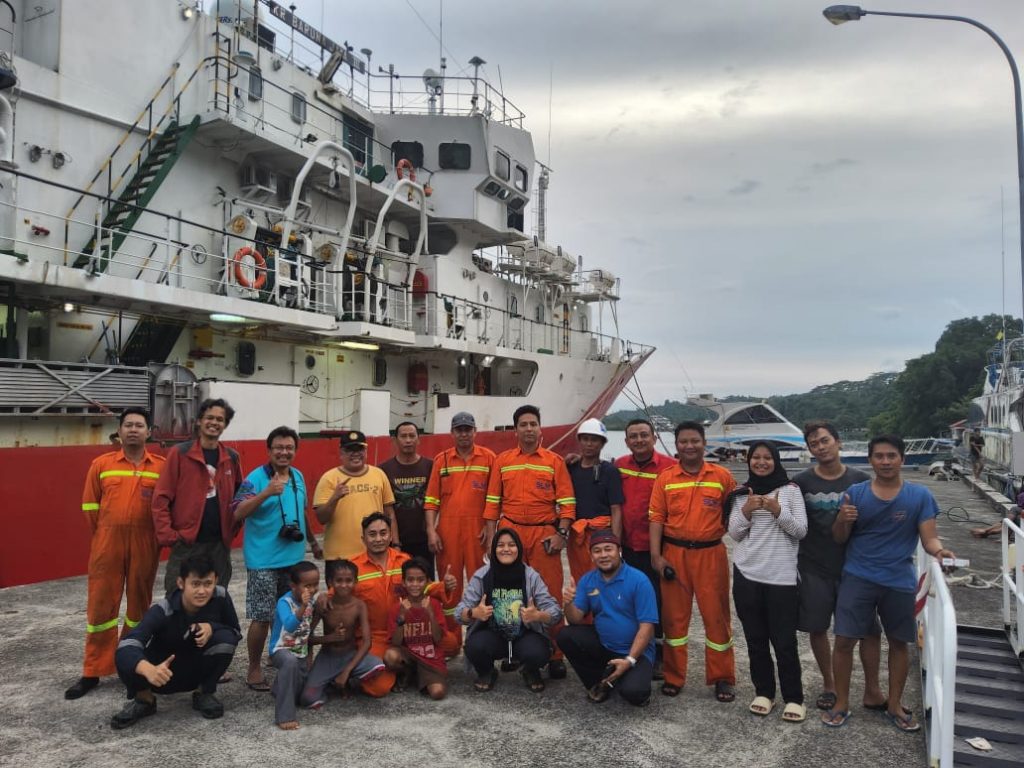
The team!